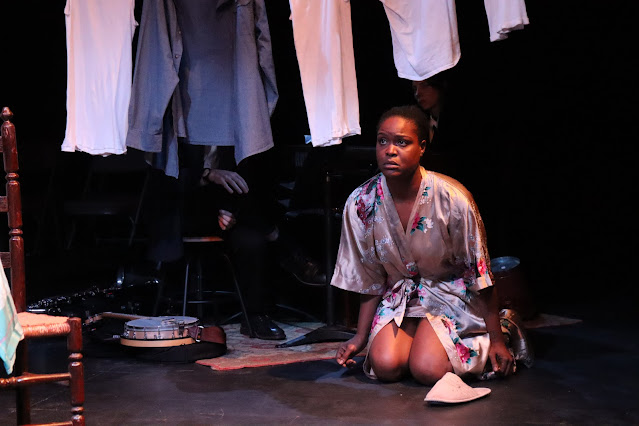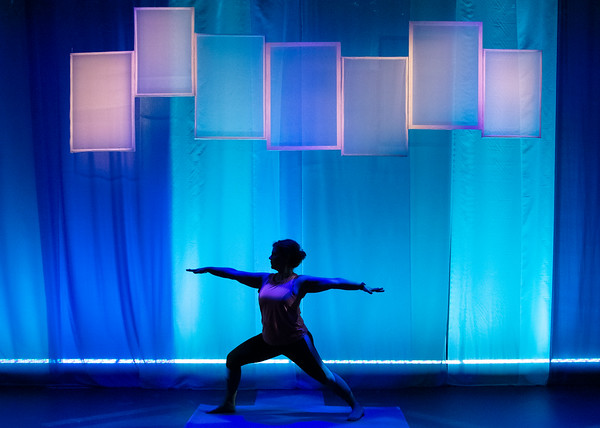Review: "A Cocktail Party Social Experiment" Highlights the Art in Conversation
A Cocktail Party Social Experiment
Created and Hosted by Wil Petre
Assisted by Lane Halperin and Clinton Edward
Sponsored by Barking Irons and presented at Chelsea Music Hall
407 W. 15th St., Manhattan, NYC
Upcoming dates: February 17, March 16, and April 13, 2020
For notification of future dates, sign up here
 |
| Photo by Karen May |
A Cocktail Party Social Experiment, created and hosted by Wil Petre and co-hosted by Lane Halperin, aims to have a group of strangers get to know each other in a meaningful way (while the eight strangers who volunteer to participate directly are the focus, one can also see them as a subset of the strangers who make up the audience and even the staff). Petre's petri dish is "the living room," a stage bearing an overhead projector and a circle of mismatched chairs for Petre and the volunteers. The event proceeds as a party game consisting of one round per volunteer with an intermission midway through and a brief coda that invites a couple of closing questions and tasks the audience with continuing the experiment. In each round, one volunteer is the Guest of Honor, who chooses two cards the determine a question that he or she is asked to kick off the round. For the duration of the round, the Guest of Honor occupies the seat across from Petre and is the center of any follow-up questioning. At the end of a round, the Guest of Honor chooses who takes his or her place, asks the initiating question determined by that person's chosen cards, and serves as the primary respondent. The resulting exchange is something approaching improvised theater by way of performance art, although not strictly either of these, however much any of those distinctions matter. What does matter is that A Cocktail Party is a flavorful mix of fun and fascinating.
 |
| Photo by Karen May |
Beyond the content of the exchanges themselves, it is also interesting to consider the workings of the event itself. The program, for instance, describes a cocktail as something that "transcends its base ingredients to become something new and exciting" and a successful cocktail party in terms of an alchemical mixture. However, in both cases, especially in the former, the ingredients are carefully chosen beforehand, while there is an element of randomness in the Experiment. The mix of persons on stage is not truly random but, more accurately, self-selected: a subset of people who thought this sounded interesting, could afford tickets and so on, and then were comfortable opening up into microphones in front of a room full of strangers. One wonders what impact those various winnowings have on the final mixture, even if, for example, the majority of volunteers being male (five men to three women on the night when we attended) is typical [ETA: the hosts have told us that it is not], and if so, if that typicality is the result of socialization. Similarly, how would this event change (or not) in different locales? Seeing some of the volunteers clearly bonding during the intermission was interesting in itself, but it also leads one to contemplate things such as how a single comment could start an entire friendship and to think about that phenomenon in one's own life.
 |
| Photo by Karen May |
-John R. Ziegler and Leah Richards



Comments
Post a Comment